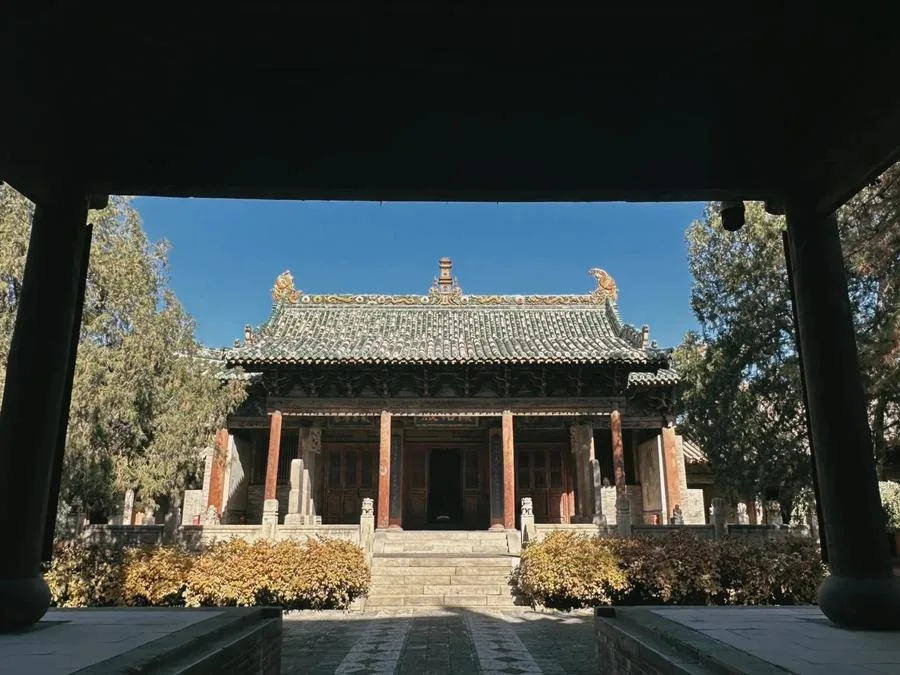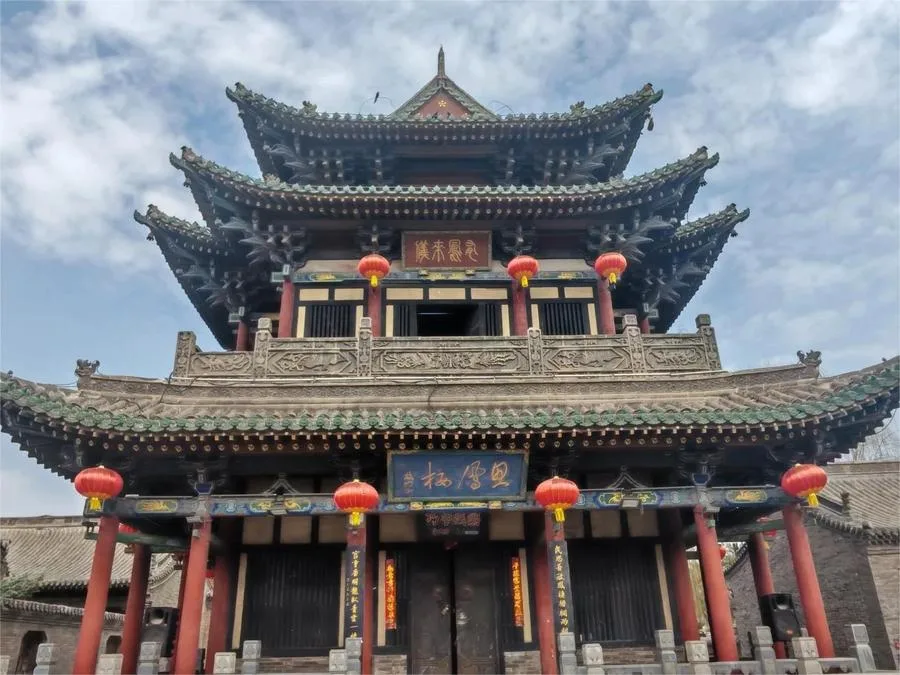Yuci Ancient Town (榆次老城), located in Jinzhong City, Shanxi Province, was reconstructed in the second year of the Kaihuang reign of the Sui Dynasty (AD 582) on the site of an old city, making it over 1400 years old. Covering an area of one million square meters, it boasts a remarkable collection of ancient buildings and garden architecture spanning 600,000 square meters. The architectural ensemble is majestic, beautifully designed, vividly colored, and intricately constructed, serving as an outstanding representation of Chinese urban culture, political culture, religious culture, commercial culture, and residential culture.
The unique geographic location of Yuci Ancient Town makes it the starting point of the golden route of Shanxi merchant tourism. The town is divided into two parts: the northern county town and the southern Guo town. The county town is considered the main city, while the Guo town is the subsidiary. Together, they form a shape reminiscent of a carp, with the head facing south and the tail to the north. The county town constitutes the belly of the carp, the Guo town its head, with the main streets running north-south as the backbone, the east and west city gates as the pectoral fins, and the Qingxu Pavilion at the center of the southern gate as the dorsal fin.
Legend has it that beneath the Qingxu Pavilion lies a well connected to the sea, allowing the carp to thrive by absorbing its nourishing energy.
Table of Contents
- Basic Information
- Location and Transportation
- Highlights of Yuci Ancient Town
- Vlog about Yuci Ancient Town
- Other Compounds in Jinzhong City
Basic Information
| Estimated Length of Tour | 2 – 3 hours |
| Ticket Price | 75 RMB |
| Opening Hours | 8.00 – 18.00 |
| Telephone Number | 0086-0354-8500003 0086-0354-3296815 |
Location and Transportation
Yuci Ancient Town is located at No. 167, Fuxing Road, Yuci District, Jinzhong City, Shanxi Province. To get there, you can take bus 12, 18, 22 Inner Loop Line, 22 Outer Loop Line, 31, 35, 38, 202, or 901 and get off at Yuci Ancient Town Stop (榆次老城站).
Highlights of Yuci Ancient Town
Chenghuang Temple

Yuci’s Chenghuang Temple (City God Temple) is one of the best-preserved Chenghuang Temples in China, covering an area of 6,000 square meters. It was first built in 1362 during the 22nd year of the Zhizheng period of the Yuan Dynasty. The main hall of the temple features an intricate and detailed architectural structure. In front of the main hall stands a spectacular Xuanyuan Pavilion, reaching a height of 25 meters. In 1999, the World Monuments Fund recognized it as one of the world’s finest ancient buildings. The Chenghuang Temple worships the City God, a significant deity in ancient religious culture, symbolizing the protection of the city and its people and overseeing the local records. This reflects the ancient concept of “co-governance by humans and gods.”
At the temple’s entrance, two imposing stone pixiu statues guard the square. These mythical creatures, believed to have only mouths and no anuses, symbolize the idea of “only entering and never exiting,” representing wealth accumulation. Under the sunlight, the iron pixiu statues stand proudly, exuding an aura of majesty, like loyal sentinels protecting the ancient city day and night.
Yuci County Government Office

The Yuci County Government Office is one of the most well-preserved county-level government offices in China, known as “The First Office in Shanxi.” Located on the north side of East Street, it covers an area of 20,000 square meters. The office was initially built during the Song Dynasty and features five halls and 26 courtyards. Its overall layout and scale reflect the traditional Confucian principles of Ming and Qing dynasties’ local government offices: “facing south from the north, civil on the left and military on the right, with the court in front and the living quarters behind.”
The office houses various artistic structures, including the Sifeng Tower, Yinbin Hall, Prison God Temple, County Deputy’s Court, Yamen God Temple, and Horse King Hall. These structures are known for their exquisite craftsmanship, skillful carving, and vivid, simple designs, possessing significant historical, cultural, and artistic value. The miraculous preservation of the Yuci County Government Office provides a precious historical specimen of county-level government offices in feudal society, holding high historical significance. Additionally, it serves as a valuable repository of literary and historical materials, with numerous couplets and inscriptions that offer rich historical insights.
Yuci Confucian Temple

The Yuci Confucian Temple is one of the oldest architectural complexes in Yuci and a key cultural heritage site. Covering an area of 23,000 square meters, with 6,000 square meters of built area, it stands as a testament to the town’s rich history. The temple’s main gate, the Lingxing Gate, was initially constructed in 999 AD during the reign of Emperor Zhenzong of the Song Dynasty. Positioned on a 1.3-meter-high platform, the gate has three bays and is topped with a glazed tile roof.
Inside the Lingxing Gate lies a crescent-shaped pool called the Pan Pool, with a stone bridge over it known as the Zhuangyuan Bridge. North of this bridge is the Dacheng Gate, which leads to the Dacheng Hall. The name “Dacheng” originates from an imperial edict by Emperor Xuanzong of the Tang Dynasty in 739 AD, which honored Confucius as the “King of Propagating Culture.” The Dacheng Hall is surrounded by 28 coiled dragon stone pillars and 31 wooden pillars, creating a grand and majestic atmosphere. Inside the hall, the central figure is Confucius, flanked by the “Four Sages” and the “Twelve Wise Ones.” The temple complex also includes the Jingyi Pavilion, Zunjing Pavilion, and the East and West Academies.
Fengming Academy

Fengming Academy, the highest educational institution in Yuci during the Qing Dynasty, was named in 1766 during the 31st year of Emperor Qianlong’s reign. The academy’s name derives from Xun Miao, a distinguished official of the Western Jin Dynasty who served as the county magistrate of Yuci and was reputed to have attracted phoenixes to Yuci due to his exemplary governance.
The academy occupies 2,700 square meters and features a garden-like layout with scenic lakes and mountains. At the center is Yan Shui Lake, covering an additional 4,800 square meters. The main ancient structures include the Erxian Shrine, the lecture hall, and various pavilions like the hexagonal pavilion, the quadrangular pavilion, the Green Flower Pavilion, and an altar. The Fengming Academy is renowned for its blend of natural beauty and classical architecture, offering a tranquil environment for learning and reflection.







